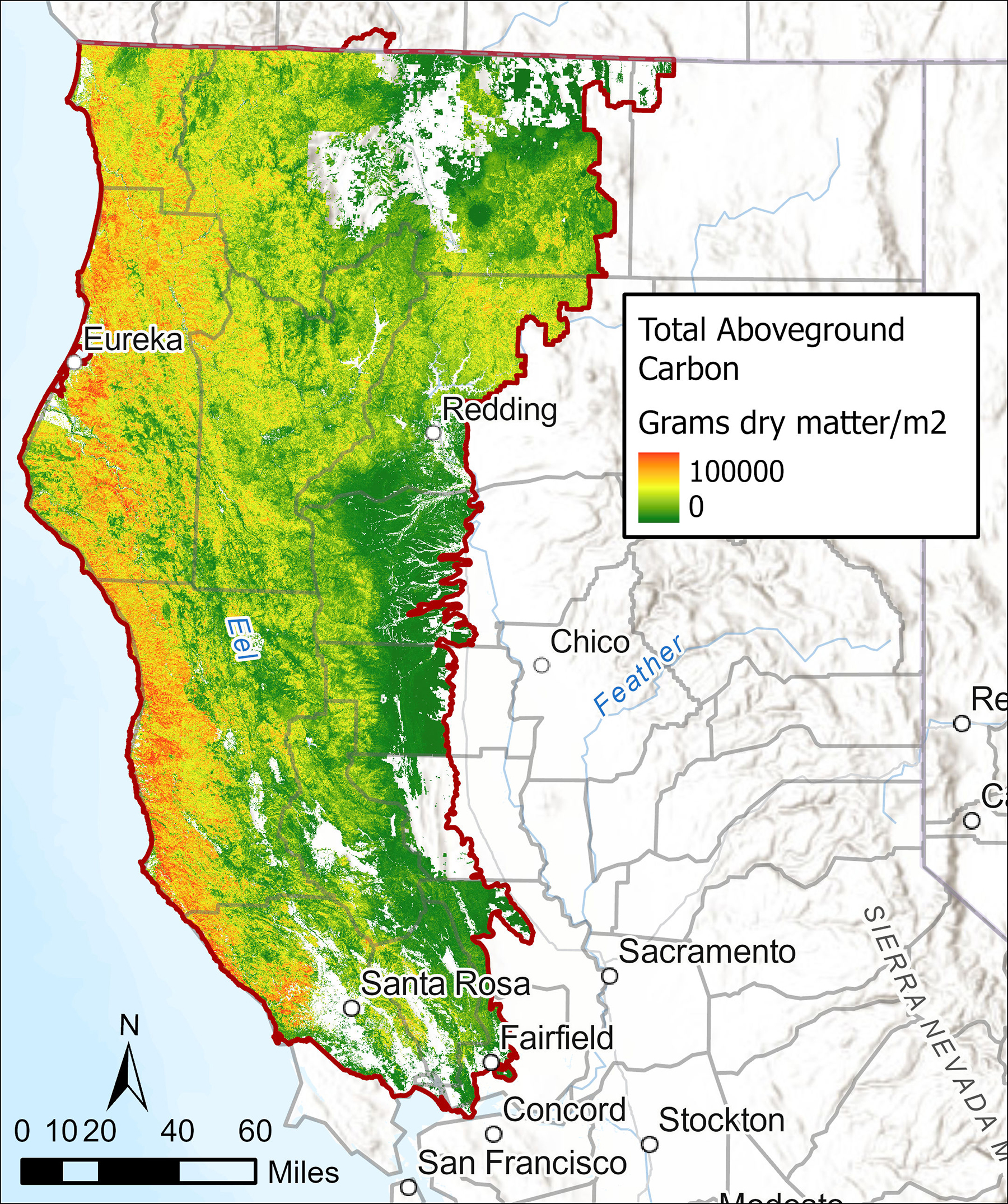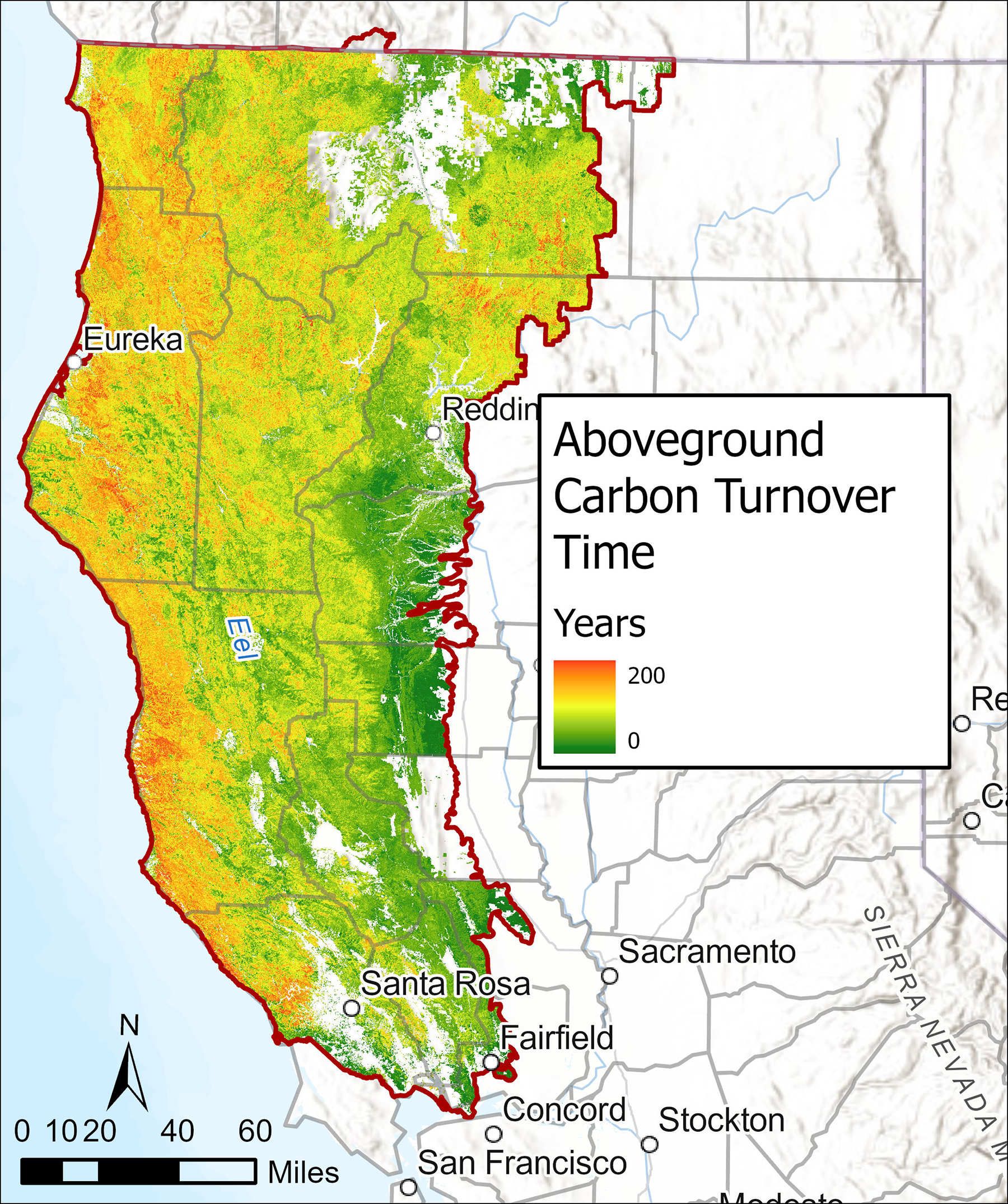Northern California Regional Profile
Carbon Storage

Photo credit: Emma Steigerwald
Overview
Managing natural and working lands to increase sequestration and storage of carbon is considered to be a relatively cost-effective strategy to help mitigate climate change and essential to California’s efforts to achieve carbon neutrality. Forest and shrublands comprise approximately 85 percent of California aboveground and belowground carbon stocks. Wildfire threatens these carbon stocks because when vegetation burns, not only is some carbon immediately released via combustion, but also live pools of carbon can rapidly convert to less stable dead pools. As vegetation decays, stored carbon is released into the atmosphere. Regrowth sequesters carbons by turning it into new plant material and is critical to future carbon storage potential.
Northern California’s redwood forests are particularly important pieces in California’s climate strategy. Redwood trees capture more carbon dioxide than any other species on Earth due to their ability to live for over 2,000 years and grow to enormous heights. Old-growth redwood forests can store up to 890 metric tons of aboveground carbon per acre (roughly the equivalent of carbon emitted by a vehicle driving 8.3 million miles). Mature second-growth coast redwood forests, with trees as young as 150 years old, can also store carbon at a higher rate than nearly all other forest types (339 metric tons of carbon per acre). However, these forests are increasingly vulnerable to climate change which is also compounding with other novel disturbances to result in higher-severity wildfire events than the redwood ecosystem was evolutionarily adapted. Land managers, conservation groups, scientists, and other stakeholders are monitoring the impact of recent wildfire events and considering management actions that can make redwood forests more resilient to future fire and climate change.
Vegetation treatments can help mitigate the risk of high-severity fire burning large carbon stocks and encourage the growth of larger trees, but there are limited opportunities for mitigating the loss of stored carbon from these treatments, such as by converting removed vegetation into wood chips or biofuel. Residual biomass generally cannot be left on site or it will contribute to fuel accumulation. However, there are limited local markets or infrastructure for processing this vegetation material in the Northern California region, so it must be trucked longer distances, contributing to greenhouse gas emissions. In many cases, transporting the material off-site is infeasible, so it is burned in piles instead. Technology such as air curtain burners is being experimented with as one way to dispose of biomass that reduces
Stakeholder Perspectives

Nearly all survey respondents rated reducing the extent of high-severity fires in forest ecosystems as extremely important for achieving large and stable carbon stores. Most other potential areas of investment were considered to be on average at least moderately, except for reducing the frequency of wildfire in shrubland ecosystems which was considered to be less important than other potential areas of investment.
Resource Conditions


Carbon storage on the landscape can be assessed via total aboveground carbon (top) and carbon residency time (bottom). The total aboveground carbon is the amount of carbon present in all live and dead trees, shrubs, herbaceous vegetation, and dead material on the ground. Preserving carbon stored in natural systems is important for mitigating climate change. When live or dead vegetation material burns, this carbon may be released as greenhouse gas emissions. Carbon residency time is the average number of years both aboveground live and dead carbon persists. Locations with longer residency times have more stable carbon stores, often in large trees; areas with shorter residency times may have carbon stored in forms such as grasses and leaves. The presence of coast redwood forests and other large trees in North Coast counties is reflected in the large total carbon stores and over 200-year average residency time of these areas.
